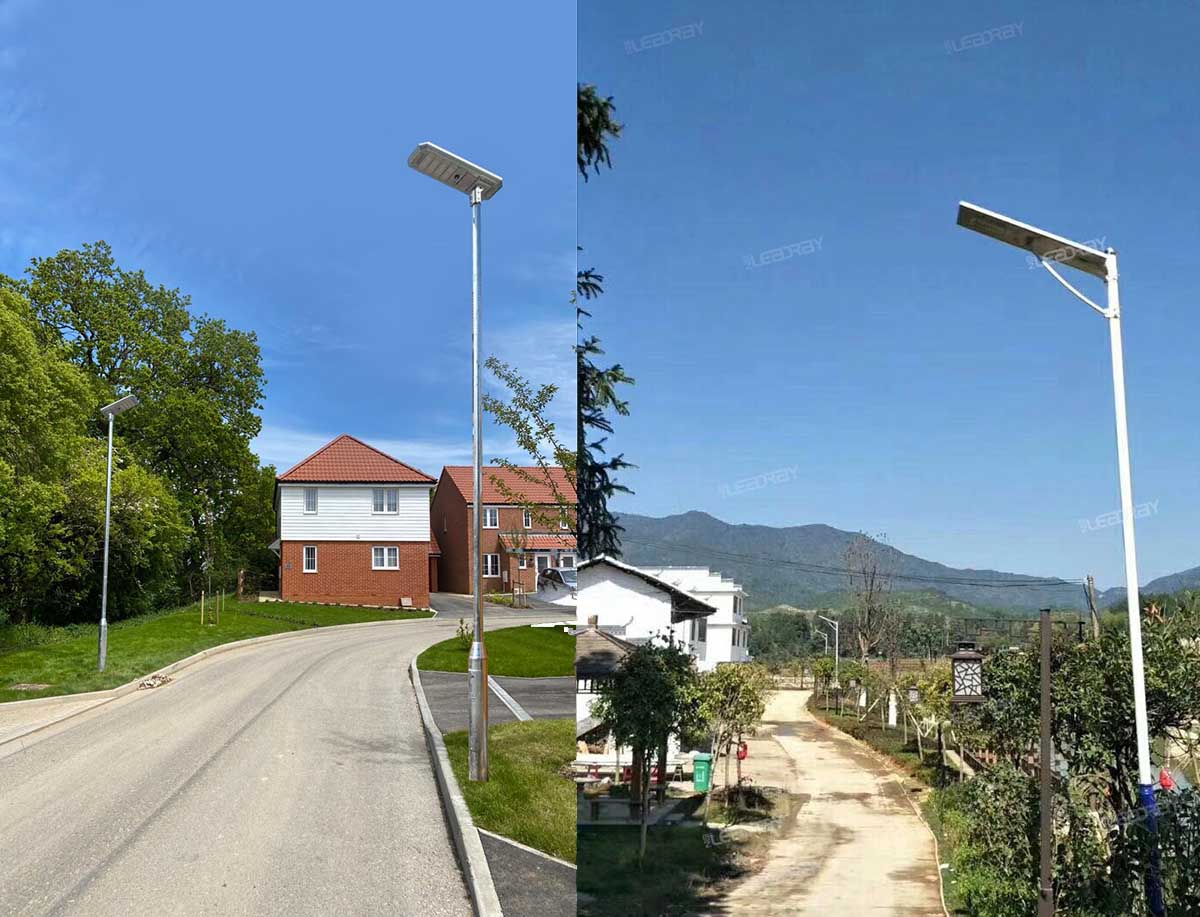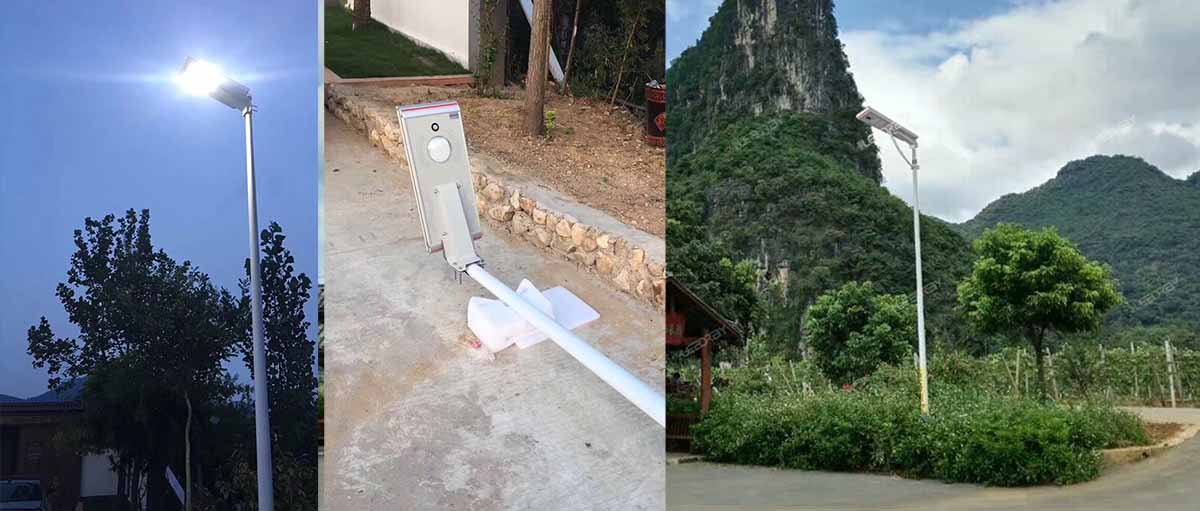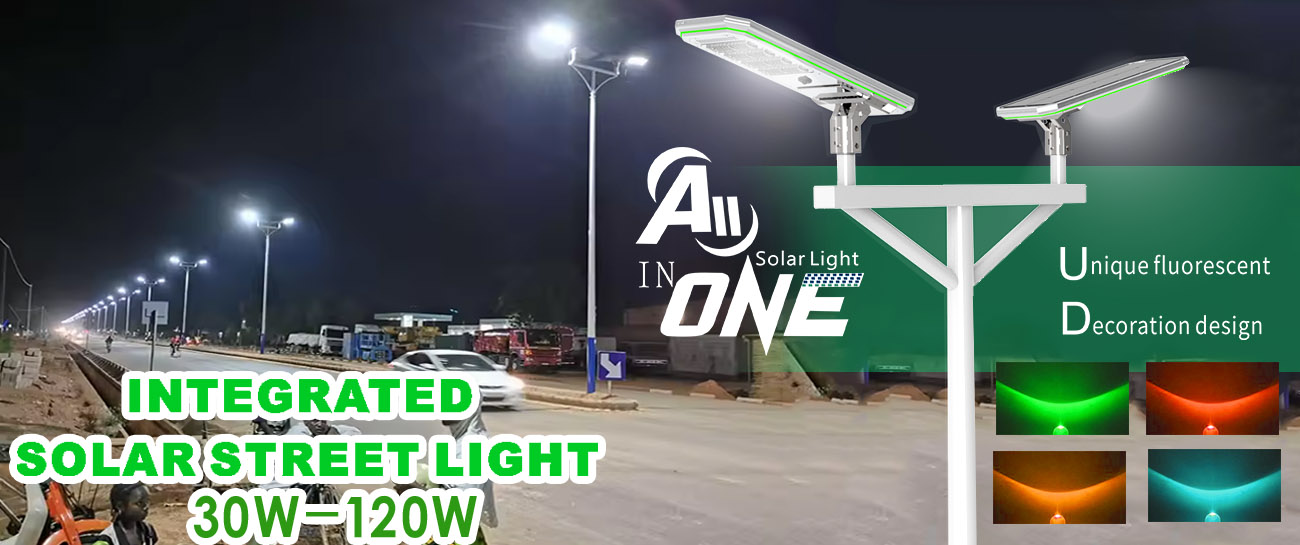When choosing the right solar street lamp, consider the following key factors to ensure it meets your specific needs in terms of lighting performance, energy efficiency, durability, and cost-effectiveness:

-
Brightness (Lumens)
-
Determine the required lumen output based on the application (e.g., roads, pathways, parking lots).
-
Example:
-
Pathways: 100–500 lumens
-
Residential streets: 500–1,500 lumens
-
Commercial areas/highways: 2,000+ lumens
-
Lighting Time & Autonomy
-
Ensure the lamp can operate for the desired hours (e.g., 8–12 hours per night) and withstand cloudy days (3–5 days of autonomy).
-
Look for models with energy storage systems (batteries) that match local weather conditions.

-
Solar Panel Type
-
Monocrystalline: Higher efficiency (15–22%), ideal for limited space or areas with less sunlight.
-
Polycrystalline: Slightly lower efficiency (12–18%), more cost-effective.
-
Thin-film: Flexible, lightweight, but less efficient; suitable for curved surfaces.
-
Battery Type
-
Lithium-ion (LiFePO4): Long lifespan (5–8 years), lightweight, and weather-resistant (recommended).
-
Lead-acid: Cheaper but heavier, shorter lifespan (3–5 years), and requires maintenance.
-
Battery Capacity (Ah): Matches the lamp’s power consumption and required autonomy.
-
Material & Weather Resistance
-
Choose lamps with IP65/IP67 waterproof rating and corrosion-resistant materials (aluminum, stainless steel) for outdoor use.
-
Ensure the structure can withstand wind (e.g., 120 km/h) and snow loads in harsh climates.
-
Light Distribution
-
Type III/IV optics: Suitable for roads and highways (wide, asymmetric distribution).
-
Type V optics: Ideal for area lighting (circular distribution).
-
Avoid glare by selecting lamps with proper shielding or diffusers.
-
Light Sensors: Automatically turn on at dusk and off at dawn.
-
Motion Sensors: Increase brightness when movement is detected, saving energy (common in residential areas).
-
Timers & Dimming Modes: Allow adjustable brightness levels (e.g., 100% at night, 50% during the early morning).
-
Smart Connectivity: IoT-enabled lamps (e.g., remote monitoring, fault alerts) for large-scale projects.

-
Installation Type
-
Pole-mounted: Standard for streets and roads (ensure pole height matches lighting needs: 3–10 meters).
-
Wall-mounted: Suitable for buildings, gardens, or pathways.
-
Ease of Maintenance
-
Look for modular designs for easy replacement of batteries or panels.
-
Solar panels should be easy to clean (tilted angles reduce dust accumulation).
-
Initial Cost: Balance between upfront price and quality (avoid cheap models with short lifespans).
-
Maintenance Costs: Lithium-ion batteries and durable panels reduce long-term expenses.
-
ROI (Return on Investment): Compare with traditional grid-powered lamps; solar lamps save on electricity and wiring costs.
-
Sunlight Availability: Assess average daily sunlight hours in your region (e.g., sunny vs. cloudy climates).
-
Temperature Range: Ensure components (batteries, panels) function in local temperatures (e.g., -20°C to 60°C).
-
Check for international standards:
-
CE/FCC: Electrical safety and electromagnetic compatibility.
-
RoHS: Restriction of hazardous materials.
-
UL/ETL: Safety certification for North American markets.
-
Choose reputable manufacturers with proven track records.
-
Look for warranties of at least 2–5 years (longer for batteries and panels).
|
Application
|
Key Considerations
|
Recommended Features
|
|
Residential Pathway
|
Low lumen (200–500), motion sensors, compact design
|
Solar panel: 10–20W; Battery: 12Ah LiFePO4
|
|
Urban Street
|
High lumen (1,500–3,000), wide light distribution
|
Solar panel: 50–100W; IP67 rating, smart dimming
|
|
Rural Road
|
Long autonomy (5+ days), durable materials
|
Solar panel: 30–60W; Lead-acid battery (if budget-friendly)
|
By prioritizing these factors, you can select a solar street lamp that optimizes performance, reliability, and sustainability for your specific needs.

 Language
Language English
English français
français العربية
العربية 中文
中文 sales@szleadray.com
sales@szleadray.com +86-13424390319
+86-13424390319










